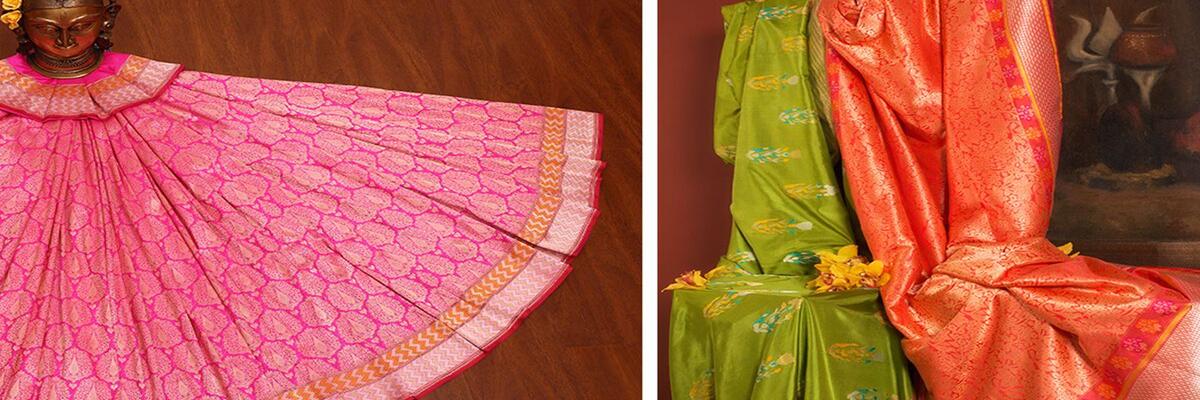Live
- A Guide to Temperature and Humidity Standards in Data Center Server Rooms
- Gadwal collector briefs on details of voters
- Jupally Krishna Rao takes part in Alampur rallu
- Bharath Prasad files 3rd Nomination
- Baisakh Month: A Time of Auspicious Beginnings and Sacred Festivals
- Oust BJD govt for overall development, says Shah
- Unveiling the Hidden Gems: Surprising Health Benefits of Garlic Peels
- Overcoming Sleep Struggles: A Comprehensive Guide to a Restful Night
- RTC bus hit the auto
- MLA Kuchukula Rajesh Reddy participated in the Birappa festival
Just In

Amid the khatkhat of the traditional handloom at the Turkish envoys residence, a family of Banarasi weavers crafted a pinkgolden saree even as their patron and textile revivalist, Smriti Morarka, underlined the need to bring handloom weaving back through experiencing it
Amid the 'khat-khat' of the traditional handloom at the Turkish envoy's residence, a family of Banarasi weavers crafted a pink-golden saree even as their patron and textile revivalist, Smriti Morarka, underlined the need to bring handloom weaving back through experiencing it.
Calling handcrafted Banarasi weaves artful and an "object of permanence" -- something that would easily spark memories of one's grandmother's prim and proper sarees -- Morarka, who has been engaged in preserving weaving traditions for the past 21 years, said the onus of revival now lies with the youth.
"The young generation is moving away from the traditional weave, and if they want it back, the responsibility is theirs to own. These days we just want to weigh everyday with money and match the right-hand side column; but these are works of art, and art requires patronage," saidMorarka.
"So, if you see it enough, touch it enough, feel it enough, only then will you get there. If I tell you three things to look for, the people making it in power loom will cover those three things first. So it's about awakening your inner eye to see these things. You can't sell it as a notebook, you can't tabulate it as points," she said.
Each Banarasi weave can take up to four weeks to six months to make, depending on a number of factors, which the revivalist segments into several phases.
"The design is hand-drawn, the inspiration for which can come from anywhere, it may be sculpture, architecture, painting, another old fragment found somewhere. Then comes deciding the gauge -- often called print in fashion parlance -- which is deciding the scale of the design. In Benaras, we work with jacquarding or replication of the design," Morarka, whose mother had established Jnana Pravaha, an institute for cultural studies in Varanasi, said.
"We cut a jacquard and run a sample of the weave. Then the yarn is dyed by the master rangrez (colourist). It is then put on the loom, coloured, dyed in all its glory. Only then the bride is ready for her procession."
The Banarasi handloom weave, revered for its elegance, is making a comeback, despite the mass production of the powerloom, the weavers said, adding the need for patronage.
"Each weaver can earn up to Rs 6,000 for one saree. People are wearing it more, and stability in their usage also means stability for our income and work," one of the weavers told, adding that the beauty of Banarasi weaves is unmatched.
Morarka exhibited her handwoven sarees from her brand Tantuvi here, at the invitation of the Turkish Ambassador. She will also exhibit at the Taj Palace here in January.

© 2024 Hyderabad Media House Limited/The Hans India. All rights reserved. Powered by hocalwire.com







